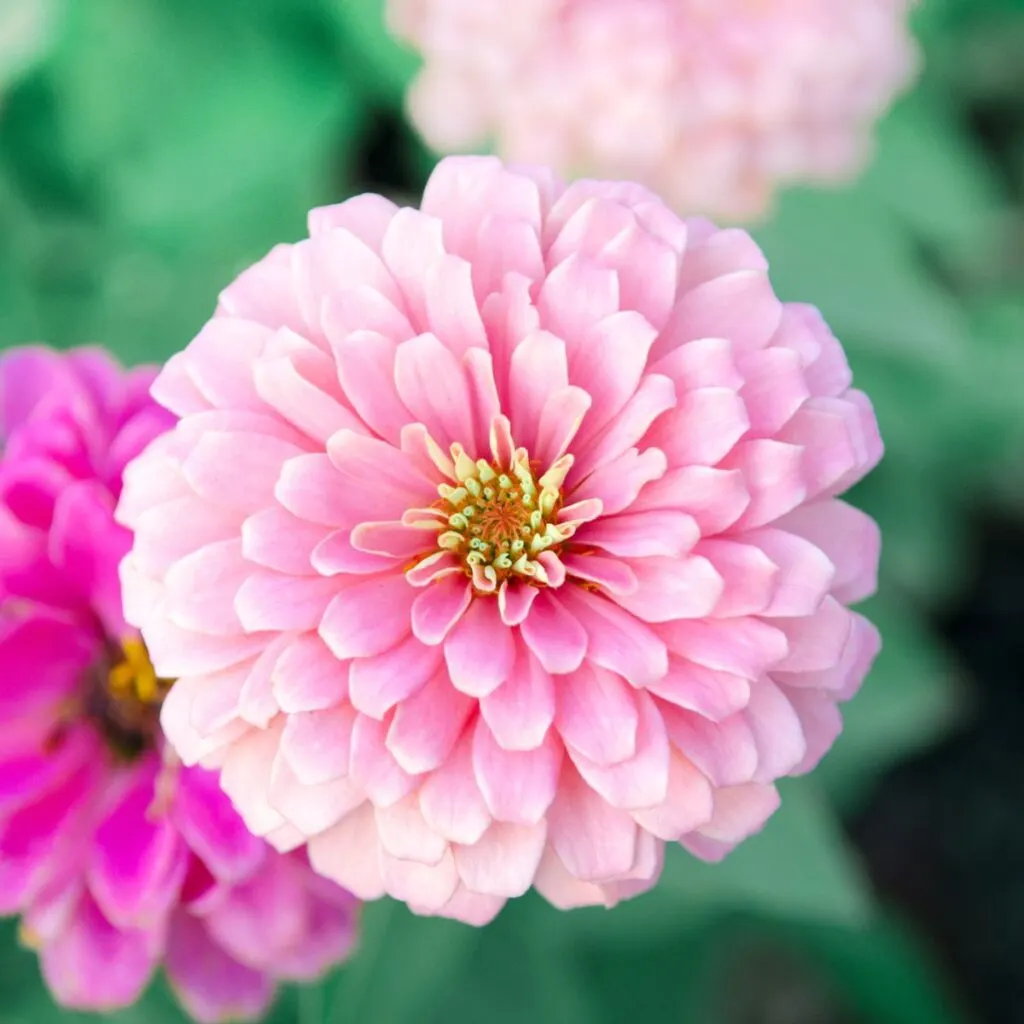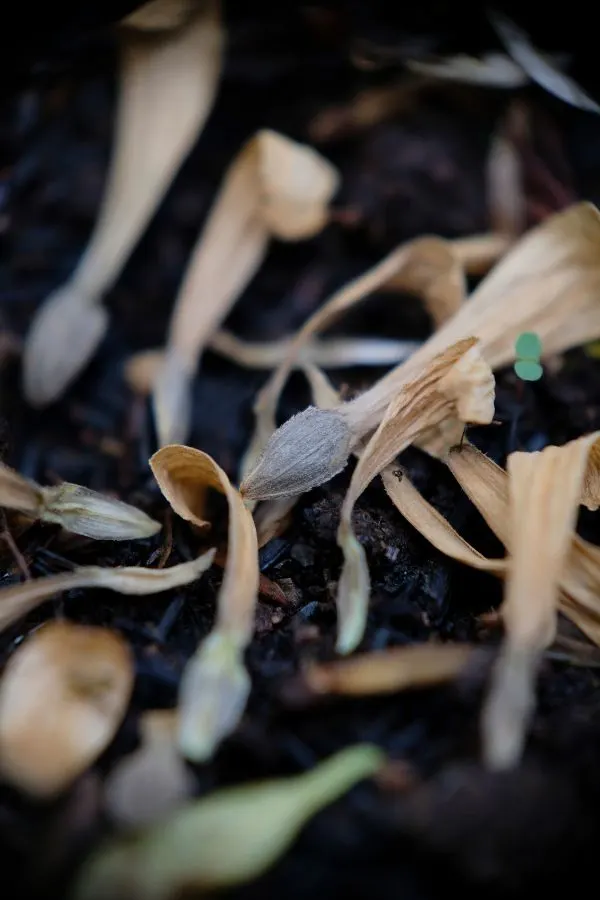Zinnias are one of the most beautiful, low maintenance and inexpensive annual flowers to grow – especially when you consider how easy it is to save zinnia seeds from existing plants to grow again and again, year after year for free!
Zinnias are an incredibly bold and colorful annual plant. Full of texture and blooms at varying heights, they add big character to gardens, flower beds, and even pots and containers. Even better, they can grow almost anywhere. In fact, the beautiful flowering annual can thrive in growing zones 2 all the way through 11!
Zinnias are known for being relatively easy to grow, making them a popular choice for many gardeners. Zinnias tolerate a variety of soil conditions and climates, and are quite adaptable to wherever they are planted. They also happen to be amazingly beneficial to other plants that grow nearby.

Best of all, zinnias grow fast and quite well when directly planted into spaces from seed. That can be huge for gardeners, saving on the cost and time of buying and planting transplants, or the hassle of growing your own indoors to plant later.
But saving zinnia seeds isn’t just about being frugal. Saving your own seeds from existing plants actually comes with quite a few additional benefits above and beyond saving money.
The Benefits Of Saving Your Own Seeds – How To Save Zinnia Seeds
Zinnias produce big blooms and a lot of them. And those flowers are more than popular with pollinators. In fact, they are a huge attraction to beneficial insects such as bees, butterflies and ladybugs.
As a popular companion plant, Zinnias can help your vegetable garden to thrive! From tomatoes, peppers, cabbage, beans and basil, zinnias help bring in pollinators to help produce more fruit and vegetables – all why keeping away pests. (See: Why You Should Grow Zinnias in Your Vegetable Garden)
Obviously, saving seeds saves on having to purchase seeds. But beyond that, growing seeds from plants that have grown in your exact soil also helps to produce better plants in the long run.

Over time, seeds from zinnias that grow in your soil and local climate adapt better to your local growing conditions. This results in more hardy and resilient plants, and ones that perform better with each passing year. It also means the seed stock coming from those plants is better with each succeeding year as well.
Last but not least, if you grow any rare or heirloom variety of zinnias, saving seeds helps you continue to enjoy this exact flower variety you love. That can really be important in case a seed provider stops carrying it.
One thing is for sure you can’t always guarantee availability of commercial seed stock or varieties from year to year. If you are wanting to start growing zinnias, always purchase as early as you can to get the best selection. Affiliate Link : Zinnia – California Giant Flower Seeds Mix
How To Save Zinnia Seeds
The Best Time & Method For Saving Zinnia Seeds
The best time to save seeds from your zinnia flowers is in late summer and early fall. Saving seeds too early in the season can be an issue. Early on, the plants are not mature. Because of that, they simply don’t produce the best or most viable seed. But later in the season, the seed from their flowers is perfect for saving.
You also want to make sure you are saving seeds that dried and developed mostly on the plant – and not off it. Zinnias are a great cut and come again flower. Many gardeners love to cut them to put in vases to enjoy inside. Although cut flowers will eventually dry out, their seeds, because they did not remain on the plant longer, are not the best for saving.
Because of this, it’s best to leave the flowers and seed heads you will use to save seed on the plant to dry and mature. This will give you the best chance of having the best seed stock.
When selecting flowers for seed stock, select the biggest and brightest blooms for saving seed. Allow the seed heads to age on the plant and then cut as soon as they dry out and begin to die off.

Once this occurs, they are mature enough – but one thing you don’t want to do is leave them on too much past this point. Unfortunately, birds and wildlife will quickly get to them once they are dry. And when they do, they can decimate or ruin the seeds in the flower heads.
One word of caution, if you happen to notice any mildew or whitish powder on any flower head, do not save it. It’s best to leave these flowers to prevent any chance of ruining the seed or spreading disease.
Cutting & Storing Seed – How To Save Zinnia Seeds
Remove the seed head by cutting the flower head a few inches below the bottom of the flower stem. Although you can pluck the seeds at this point, it’s best to let the entire flower dry out even more off of the plant.
The drier your seeds are for saving the better. To do this, place the flower heads in a protected space where they can further dry.
A wire cooling or baking rack work well for this in a protected area. This allows the flowers to have air flow above and under to dry them more quickly.

Allow the flower and seed heads to age a few more weeks until completely dry and brittle. At this point, store flowers and all in a paper bag or large envelope. Do not use plastic bags, as this creates a breeding ground for mold and moisture.
Always be sure to collect and label your bags with the flower and variety to help identify what you are planting. This is a quick and easy way to keep track of your seeds as they are stored over the winter.
Harvesting The Seeds From The Flowers – How To Save Zinnia Seeds
Allowing the seed to remain with the flower heads helps protect the seeds and allows them to dry out even more. By December or January, you can then quickly and easily harvest the seeds from the flower to prepare for planting the following year.
Gently hold the stem of the dried zinnia in one hand while picking a cluster of petals from the flower head with your thumb and pointer finger. You will notice a sharp, arrow-head shaped seed at the tip.
Make sure to save only dark, mature seeds – these are optimal for growth. If you notice lighter seeds, this simply tells you that these are not as mature and they are best to leave out.
The good news is that each flower head will contain a lot of seeds to choose from – so having enough is never an issue. Here is to saving seeds from your zinnias – and growing bigger, better and even brighter bloom sets next year!
Follow Our Facebook Page For Even More Great Tips! Simple Garden Life Facebook Page
Simple Garden Life is a website dedicated to keeping gardening fun, simple and enjoyable! We publish two new articles each week along with a new garden podcast episode every two weeks. This article may contain affiliate links.
